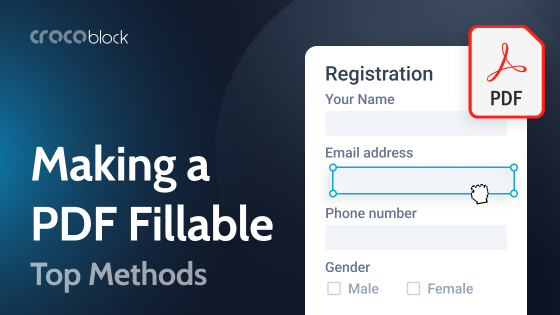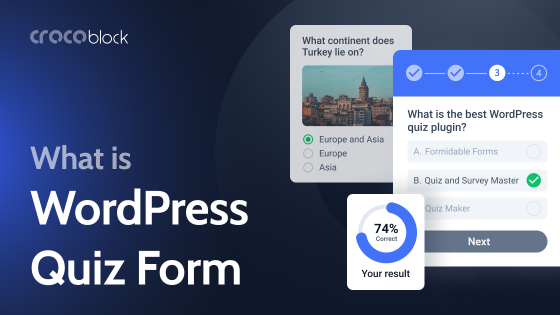Essentially, cPanel is a user-friendly interface that enables you to manage your web hosting. You can use it to publish websites, manage your domains, create and manage email accounts, manage web files, and more.
cPanel is a popular control panel that comes as standard with many web hosting packages. Therefore, it is worth understanding what cPanel is and how it works so that you can get the most from your web hosting.
Is cPanel Free?
No, as cPanel is a third-party application, it is not free. At the time of writing this article, cPanel’s pricing is as follows:
- cPanel Solo: $15.99 per month for one account.
- Admin: $27.99 per month for up to five accounts.
- Pro: $39.99 per month for up to 30 accounts.
- Premier: $59.99 per month for up to 100 accounts.
However, many web hosting providers include cPanel as part of their hosting packages at no extra cost. Some providers supply cPanel for free for the first year and then charge extra after that.
In recent years, though, some hosting providers have begun to move away from using cPanel due to the high cost.
Benefits of Using cPanel
The main benefit of using cPanel is that it provides a friendly user interface that makes a complicated system much easier to manage. Similar to how WordPress makes it easier to manage the content and layout of your website without code.
If your web hosting account has cPanel, you will use it when you need to do any of the following tasks:
- Manage and organize your web files.
- Install software such as WordPress.
- Create and manage email addresses.
- Manage domains and subdomains.
- Manage users.
- Manage passwords and security.
- Backup and manage your site’s database.
cPanel makes all this much easier, thanks to the easy-to-navigate graphical user interface.
How to Log Into cPanel
One way to log into cPanel is to first log into your web hosting account and then access cPanel from there. Of course, this will be different depending on your particular web hosting provider.
However, you can also log into cPanel directly via the URL of your website in one of the following ways:
- https://yourwebsitesite.com:2083
- https://yourwebsitesite.com/cpanel
From there, you should be able to enter your username and password and log in. Once you have logged in, you should see all the cPanel settings available to you.
Key Features and Sections in cPanel
The cPanel dashboard is split into different sections for each aspect of managing your website or server. Here are the main sections you will find in your cPanel dashboard.
Database management
If you use a content management system (CMS) such as WordPress, Drupal, or Joomla, it will use a database to store information such as posts, images, plugin settings, users, and more. The database management section of cPanel enables you to manage your databases. Options that are typically available include:
- MySQL Databases
- phpMyAdmin
- MySQL Database Wizard
- Remote MySQL
Software installers
To make things easy for you, your web host will likely provide you with scripts to install popular website software such as:
- WordPressl
- Joomla;
- Drupal;
- phpBB.
With just a few clicks, you can have your favorite CMS up and running in just a few minutes.
Email management
Once you have your own website on your own domain, you probably want to have an email address like [email protected]. This looks more professional than having something like [email protected] or whatever.
Thankfully, cPanel makes it easy to set up and manage email accounts on your domains. Tools typically available in the cPanel email management section include:
- Encryption;
- Address Importer;
- Forwarders;
- Autoresponders;
- Email Wizard;
- Email Disk Usage;
- Global Filters;
- User Filters.
Domain management
You can set up and manage all your domains, subdomains, and related settings here. Tools typically available in this section include:
- DNS Manager;
- Addon Domains;
- Redirects;
- Subdomains;
- Aliases;
- Preview Website.
File manager
Although many experienced users will upload and manage their web files via FTP, beginners may appreciate using cPanel’s user-friendly file management tools. These typically include:
- File Manager;
- Images;
- Website Backup;
- File Disk Usage;
- FTP Connections;
- Git Version Control;
- Inode Counter.
Metrics
When managing a website, it can be helpful to get some insight into your site’s stats and day-to-day performance. cPanel’s metrics section provides this with a range of useful tools, such as:
- Bandwidth;
- Concurrent Connection Usage;
- Awstats;
- Visitors;
- CPU Usage;
- Errors;
- Raw Access.
Security
If your website is important to you, you should be concerned about security. Thankfully, cPanel profiles a range of security tools to help keep your site safe and free from attacks and threats. These typically include:
- SSL/TLS;
- Lets Encrypt;
- IP Blocker;
- SSH Access;
- Hotlink Protection;
- Two-Factor Authentication;
- Leech Protection.
Alternatives to cPanel
Although cPanel is easy-to-use and one of the most well-known web hosting control panels available, there has been a bit of a move away from it in recent years. This is due to cPanel’s new licensing policy that makes it expensive for resellers.
So, it’s good to know what alternatives there are available, just in case you need to use them. So, here are some of the best cPanel alternatives you might want to consider.
SPanel
SPanel is an all-in-one cloud management platform that allows you to manage your web server easily. At the time of writing this, SPanel is free. However, soon they will be charging for it, starting from $14.95 per month for up to 10 accounts.
Key features of SPanel include:
- Email accounts, forwarders, and autoresponders;
- Backups;
- DNS editor;
- WordPress manager;
- PHP manager;
- MySQL databases;
- Subdomains;
- SpamAssassin;
- SSL certificates.
Plesk
Plesk is a popular control panel currently used on over 11 million websites and 15 million mailboxes. Pricing starts at $12.38 per month for up to 10 domains.
Key features of Plesk include:
- Single dashboard to run multiple sites, run updates, and monitor performance.
- The robust site and server security.
- More than 100 extensions, including Cloudflare, DigiCert SSL, NodeJs, CloudLinux, Let’s Encrypt, and more.
- WordPress toolkit makes installing and managing WordPress on any of your websites quicker and easier.
- Compatible with large cloud providers such as AWS, Alibaba, Azure, Google, and DigitalOcean.
InterWorx
InterWorx is a website hosting control panel that consists of two modules: NodeWorx for managing servers and SiteWorx for managing domains and websites. Pricing starts at $7.50 per month for a single VPS license.
NodeWorx features:
- Server control, including FTP configuration, SSH, firewall rules, DNS, IP addresses, MySQL, and virus protection.
- Hosting management, including creating accounts, setting up email alerts, and configuring plans and resource limits.
- Clustering multiple server instances to meet the reliability and scalability demands of modern web applications and high-traffic websites.
SiteWorx features:
- Hosting management, including configuring domains, email, software, website content, and more.
- Statistics suite.
- Comprehensive backups with a single click.
OviPanel
If you are looking for a free alternative to cPanel, OviPanel is worth checking out. It costs nothing to use OviPanel for unlimited domains. However, the free version does not come with any support. You can get a year of support for $5 per month.
Key features of OviPanel include:
- Enhanced security blocks your website from common exploits.
- Install Let’s Encrypt SSL with a single click.
- Multiple PHP versions are available.
- Multiple database support, including Postgres SQL and MongoDB.
- Multiple web server support, including Apache and NGINX.
- Logging and stats.
- Lightweight file manager.
- Unlimited accounts.
CyberPanel
CyberPanel is a free, open-source web hosting control panel that is ideal for installing and managing WordPress.
Key features of CyberPanel include:
- Intuitive, easy-to-use interface.
- LiteSpeed Cache to speed up your website.
- WordPress Manager makes it easy to manage all your WordPress websites from a single dashboard.
- Easy-to-use file manager.
- Unlimited installations.
- Easy resource monitor for keeping track of your site’s performance.
- One-click SSL with Let’s Encrypt.
- Built-in ModSecurity firewall to prevent attacks.
FAQ
cPanel provides an easy-to-use graphical interface for all your web hosting management functions.
No, WordPress and cPanel are not the same. WordPress is a content management system (CMS) that you can use to build and maintain a website without any coding knowledge. cPanel is a web server management interface.
Web hosting is the online computer resources you rent in order to have your website on the web. It contains all the files and databases necessary to run your website. cPanel is a user interface that enables you to manage your web hosting. It often comes provided as part of many web hosting packages.
There are many good alternatives to cPanel, but the best is probably SPanel.
You can access cPanel from any web browser connected to the internet. However, the server running cPanel needs to be CentOS 7 or CloudLinux. cPanel cannot run on a Windows server.
Summary
So, here I have answered the question, “what is cPanel?” To summarise, cPanel is a user-friendly interface for managing your web hosting. You can use it to manage domains, install WordPress, manage email accounts, manage files, manage databases, and more.
cPanel often comes with many web hosting packages, although some web hosting companies have started to move away from it due to the cost. Thankfully, there are many other web server control panels available, and the best is probably SPanel, with Plesk a close second.
Alternatively, if you are looking for a completely free alternative, OviPanel and CyberPanel are worth a look.



